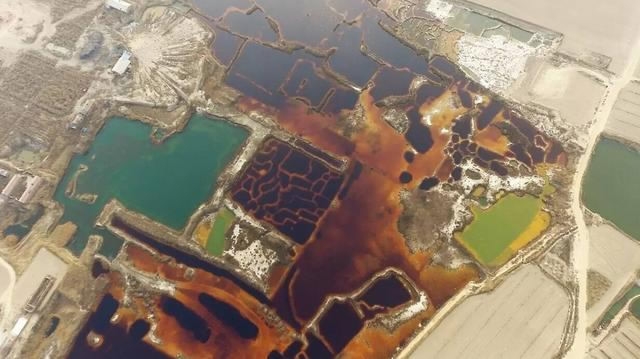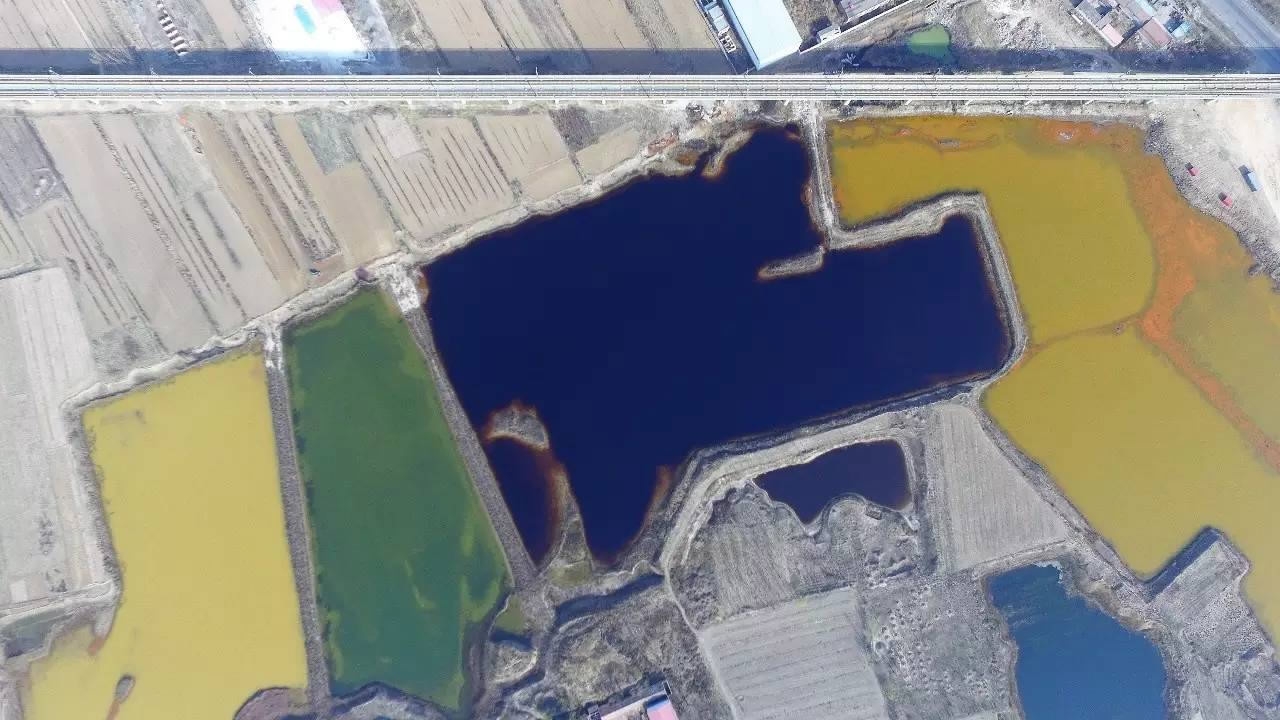China's Ministry of Environmental Protection on Wednesday urged the local government in Dacheng county, Hebei Province to tackle water pollution after aerial photos of massive rust-colored sewage pits went viral.
Chinese NGO Liangjiang Voluntary Service Center shared photos of two different pits, both near farmland and small factories.

Sewage pits are seen in Nanzhaofu town in Langfang city. /Liangjiang Huanbao Photo

Sewage pits are seen in Nanzhaofu town in Langfang city. /Liangjiang Huanbao Photo
The NGO also said that it had found significant water pollution elsewhere in Hebei and neighboring Tianjin Municipality in a recent investigation.
The two lakes of filthy water in Nanzhaofu town, Dacheng are around 170,000 square meters and 30,000 square meters respectively, the NGO said on it its WeChat account “Liangjiang Huanbao.”

Sewage pits are seen in Nanzhaofu town in Langfang city. /Liangjiang Huanbao Photo
A wastewater pool covering about 150,000 square meters was seen in Tongjiazhuang village in Tianjin, the report said.

Sewage pits are seen Tongjiazhuang village in Tianjin. /Liangjiang Huanbao Photo

Sewage pits are seen Tongjiazhuang village in Tianjin. /Liangjiang Huanbao Photo
The water there had a pH level of 1, indicating most acidity, the organization said.

Sewage pits are seen Tongjiazhuang village in Tianjin. /Liangjiang Huanbao Photo
The pH of water determines the solubility (amount that can be dissolved in the water) and biological availability (amount that can be utilized by aquatic life) of chemical constituents such as nutrients and heavy metals. In the case of heavy metals, they tend to be more toxic at lower pH because they are more soluble.

PH is a measure of how acidic or basic water is. The range goes from 0-14, with 7 being neutral. /CGTN Photo
These polluted water pools have existed for a long time, possibly contaminating underground water and soil and threatening water safety in these areas, the NGO warned.
The organization said it had also found similar situations in the Hebei cities of Huanghua, Cangzhou and Shijiazhuang, where large dirty pools were located near chemical, leather production and metal factories.

Sewage pits are seen in Tongjiazhuang village in Tianjin. /Liangjiang Huanbao Photo
Following the report, the Ministry of Environmental Protection and the Hebei government have sent a joint investigation team to these places, the ministry said in a statement on WeChat, promising transparency in the probe.
The Dacheng pools were caused by illegal industrial acidic waste water dumping in 2013, activity which has contaminated water and soil, the ministry said.
The Dacheng government began to tackle the water pollution after the dumping but it has not finished the work, it added.
Meanwhile, the ministry said it has started a joint investigation with Tianjin authorities on its sewage.
Hebei is home to a lot of heavy industry as China's main province for iron and steel production.
Most public attention in recent years has focused on heavy air pollution in Chinese cities, although water and soil contamination are also regarded as serious by environmentalists.









